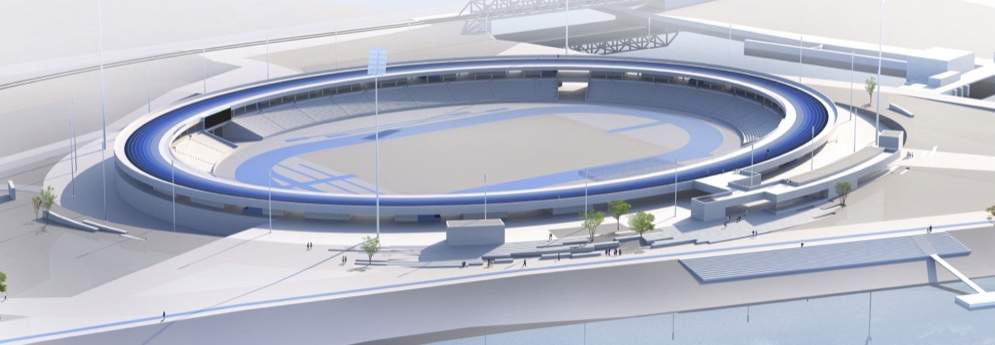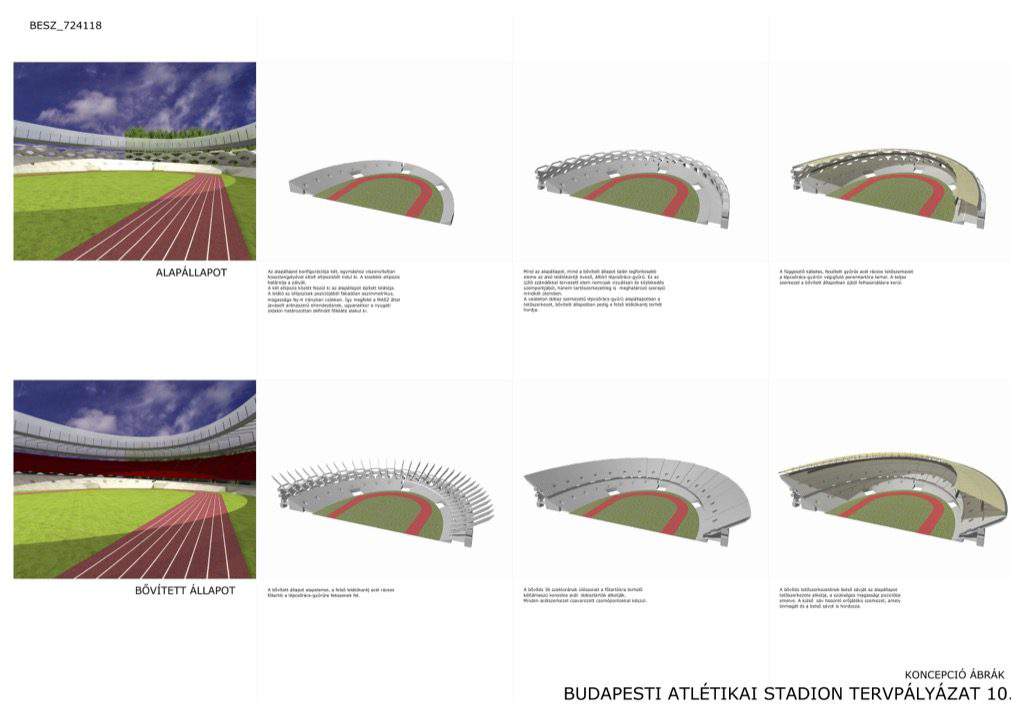This is what the Budapest Athletics Stadium will look like
The winner project for the construction of the Budapest Athletics Stadium has been chosen. According to pestbuda.hu, the Stadium, in its extended form, will be able to host 55,000 people.
Építészfórum reports that four proposals were awarded by the committee, regarding the plans for the construction of the Budapest Athletics Stadium. Altogether 20 million forints (~64,000 EUR) were divided among the four winner projects. The first prize was given to Marcel Ferencz DLA and his team, the Napur Architect architectural agency.
At the moment, there is no such establishment (nor roofed or outdoors) in Hungary that is dedicated to hosting athletic events. The government’s goal is to provide a better quality sports service, to ensure that the preparation for the Olympics is in a professionally adequate venue, to promote all sorts of sports, and to provide better accessibility to these sports. To achieve these goals, it is important to improve sports infrastructure.
The Kemény Ferenc Program proposes establishing an athletics centre in Budapest, which will consist of a central stadium, a roofed hall and outdoor training courts.
One of the requirements for the stadium is that there has to be space for 15,000 people and, when it is extended, it needs to have 55,000 seats. The most important requirement, however, is that the stadium has to be built in a way that the compact and efficient initial state can be extended into a grand stadium that would host world events. This extending and deconstructing process has to be economic and budget-friendly. Furthermore, the architectural design, the aesthetic values and the technological quality are all essential factors.
The committee found that most of the entries had smart, resourceful and interesting solutions, but not any of them could live up to the functional expectations. One of these issues is the entrance and the emptying of the stadium.
- In the case of entry nr. 1, the entrance is too small, restricted, and the location of the parking lots is questionable
- Entry nr. 2: the location of the running court is smart, the organisation of traffic uses is efficient too
- Entry nr. 4: there are problems with security, wind protection, with the asymmetric design (owing to this, the scaffoldings are not roofed properly), the lighting (the arena is lit only from one side), but the functional contact system is great and thorough
- Entry nr. 3: the vertical communication and traffic system located in the front is overcomplicated and, according to the committee, is farfetched.
Designers tried to meet the professional sports-related requirements, but it can be felt at each entry that they do not have experience at designing athletics stadiums. The plans were examined thoroughly from the point of view of the arena. Though the standards of the International Association of Athletics Federations were all respected, the professional rooms and catering establishments and equipment were not placed adequately.
The committee favoured projects that considered the environmental features when drawing up plans. These features – in the best case – should contribute to the functional services and needs of the stadium both in the initial and the extended state. Most of the applicants designed the environmental planning by taking into consideration the fact that when big events are taking place, it is not only the stadium that is used but also the surrounding area (think about food courts and tents for children). However, except for entry nr 2, no one thought about the sewage system. Except for two plans, all applicants paid attention to public transport, including the HÉV lines, and proposed such locations where no costly and significant clearings had to be done. Plans that included the destruction of green areas for the best of the surface parking lots, were not endorsed.
The committee had high expectations regarding the adequacy of the structure and the usage of realizable and sustainable frameworks. What they were looking for were such innovative ideas that are favourable from the point of view of the investment costs and the time needed for construction. Other expectations included energy efficiency and low-cost operation. Entry nr. 2 stood out from the rest with its sensitive and sensible siting and the smart temporary solution for the extended stadium. Entries 1, 3, 4 ignored the expectation of the budget-friendly and economic extension and deconstruction.
The winners and the sums they get for realising their plans:
1st prize: NAPUR ARCHITECT Építészeti Iroda Kft., 7.000.000,- Ft gross (~22,000 EUR)
Lead designer architects: Marcel Ferencz DLA, György Détári
Partner designers: László Gábor Szántó, Attila Lucz, Ferenc Rajkai, Klára Macsinka, Gábor Albert
2nd prize: Építészkohó Kft., 6.000.000.- Ft gross (~19,000 EUR)
Lead designer architect: Tamás Attila Tarnóczky
Partner designers: Ádám Rhorer, Gyula Zoárd Mangel, Ferenc Rajkai, Ákos Medek
3rd prize: BORD Építész Stúdió Kft., 5.500.000.- Ft gross (~18,000 EUR)
Lead designer architect: Péter Bordás
Partner designers: Zsigmond Dezső, Zoltán Hollókövi, Ádám Rhorer, Zoltán Üveges
In addition, István Károlyi’s plan is to be bought for 1.500.000.- Ft gross (~5,000 EUR). The lead architect designer is István Károlyi, the partner designers are István Sári, László Szlancsik, Béla Zöld, Tamás Piller, Ádám Rhorer.
You can check out the plans here.
featured image: kemenyferencprogram.hu
Ce: bm
Source: pestbuda.hu, epiteszforum.hu
please make a donation here
Hot news
What happened today in Hungary – 26 July, 2024
Drama: number of births in a 20-year low in Hungary
Yay or nay? – 6 odd Hungarian delicacies that make our skin crawl
Budapest tourism “exploded” this past weekend
Container transport in Budapest may stop: How will this affect Hungarian economy?
Minister: Hungary will protect its territory by every means possible








